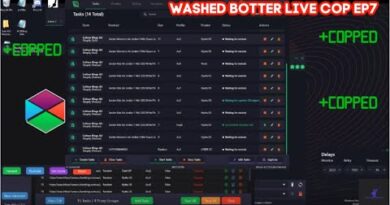OSI Model Data Segmentation with Data Stream CCNA 200 301 NetAcad
OSI Model Data Segmentation with Data Stream CCNA 200 301 NetAcad
Video Link
OSI Model Data Segmentation with Data Stream CCNA 200-301
======Topic Timeline======
⏱️TIMESTAMPS⏱️
00:00 CCIE Academy Intro
00:30 CCNA 200-301
00:39 Data Encapsulation
00:54 Data Segmentation
01:03 OSI Reference Model
01:31 Increase Speed
02:25 Multiplexing
02:34 Multiplexer Device
02:57 Increases efficiency
03:10 Source to Destination
03:31 Retransmitted
03:50 Segmenting and multiplexing
03:57 Host PC
04:04 Segment
04:21 Segmentation
04:50 Analog and Digital Signals
05:00 Multiplexing
Data Encapsulation
Segmenting Messages
Knowing the OSI reference model and the TCP/IP protocol model will come in handy when you learn about how data is encapsulated as it moves across a network. It is not as simple as a physical letter being sent through the mail system.
In theory, a single communication, such as a video or an email message with many large attachments, could be sent across a network from a source to a destination as one massive, uninterrupted stream of bits. However, this would create problems for other devices needing to use the same communication channels or links. These large streams of data would result in significant delays. Further, if any link in the interconnected network infrastructure failed during the transmission, the complete message would be lost and would have to be retransmitted in full.
A better approach is to divide the data into smaller, more manageable pieces to send over the network. Segmentation is the process of dividing a stream of data into smaller units for transmissions over the network. Segmentation is necessary because data networks use the TCP/IP protocol suite to send data in individual IP packets. Each packet is sent separately, similar to sending a long letter as a series of individual postcards. Packets containing segments for the same destination can be sent over different paths.
This leads to segmenting messages having two primary benefits:
Increases speed – Because a large data stream is segmented into packets, large amounts of data can be sent over the network without tying up a communications link. This allows many different conversations to be interleaved on the network called multiplexing.
Increases efficiency -If a single segment fails to reach its destination due to a failure in the network or network congestion, only that segment needs to be retransmitted instead of resending the entire data stream.
Click each button in the figure to view the animations of segmentation and multiplexing.
Share, Support, and Subscribe
Subscribe: https://www.youtube.com/ccieacademy
Website: https://www.ccieacademy.com.pk
Facebook page: https://www.facebook.com/CCIENCA
All about CCIE Academy urdu videos: https://www.youtube.com/ccieacademy
About: All about CCIE Academy urdu and Hindi is a YouTube Channel, where you will find Computer Network related and technological videos in Urdu, New Video is Posted Everyday Insh Allah!
https://www.youtube.com/ccieacademy
cisco academie



